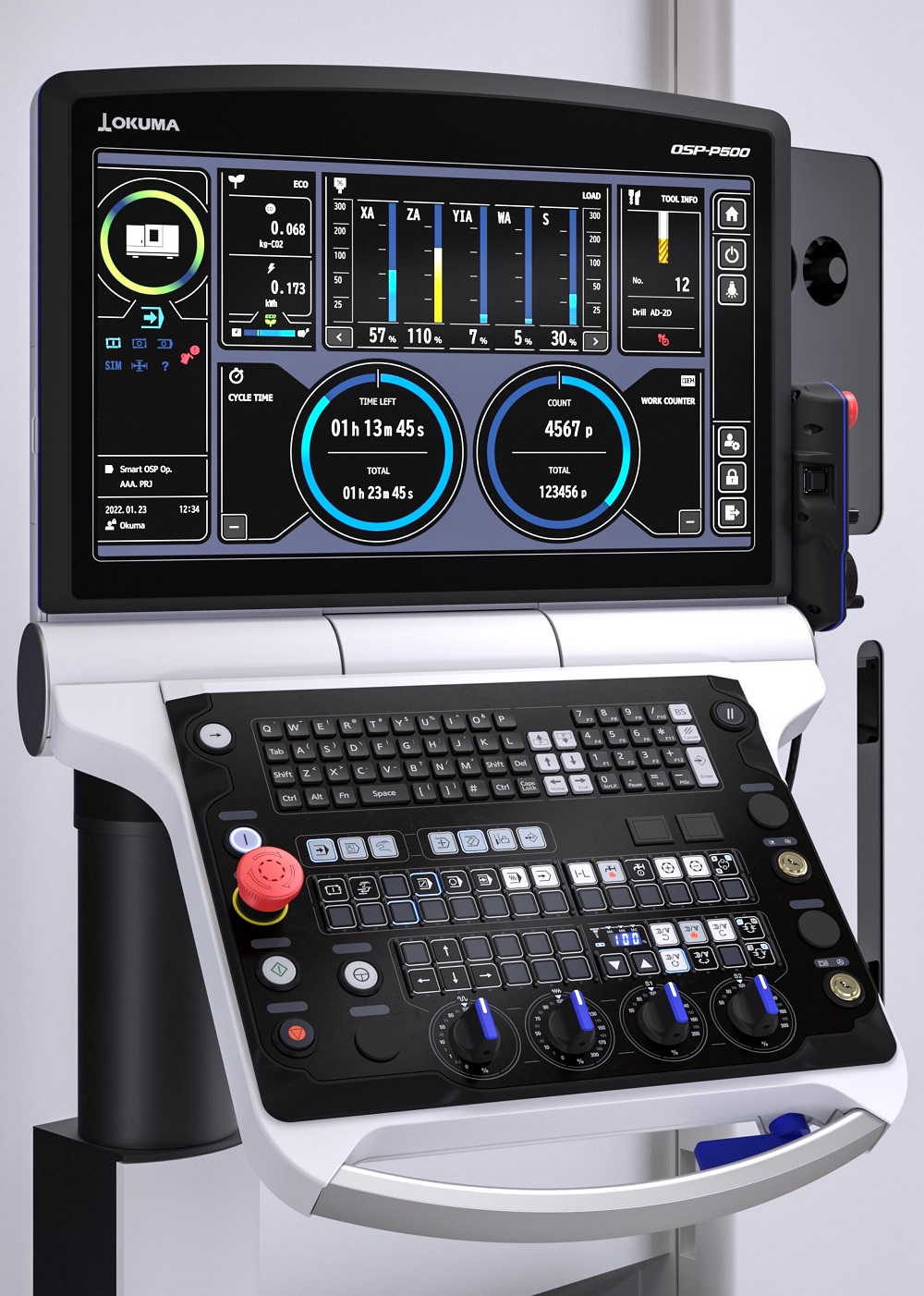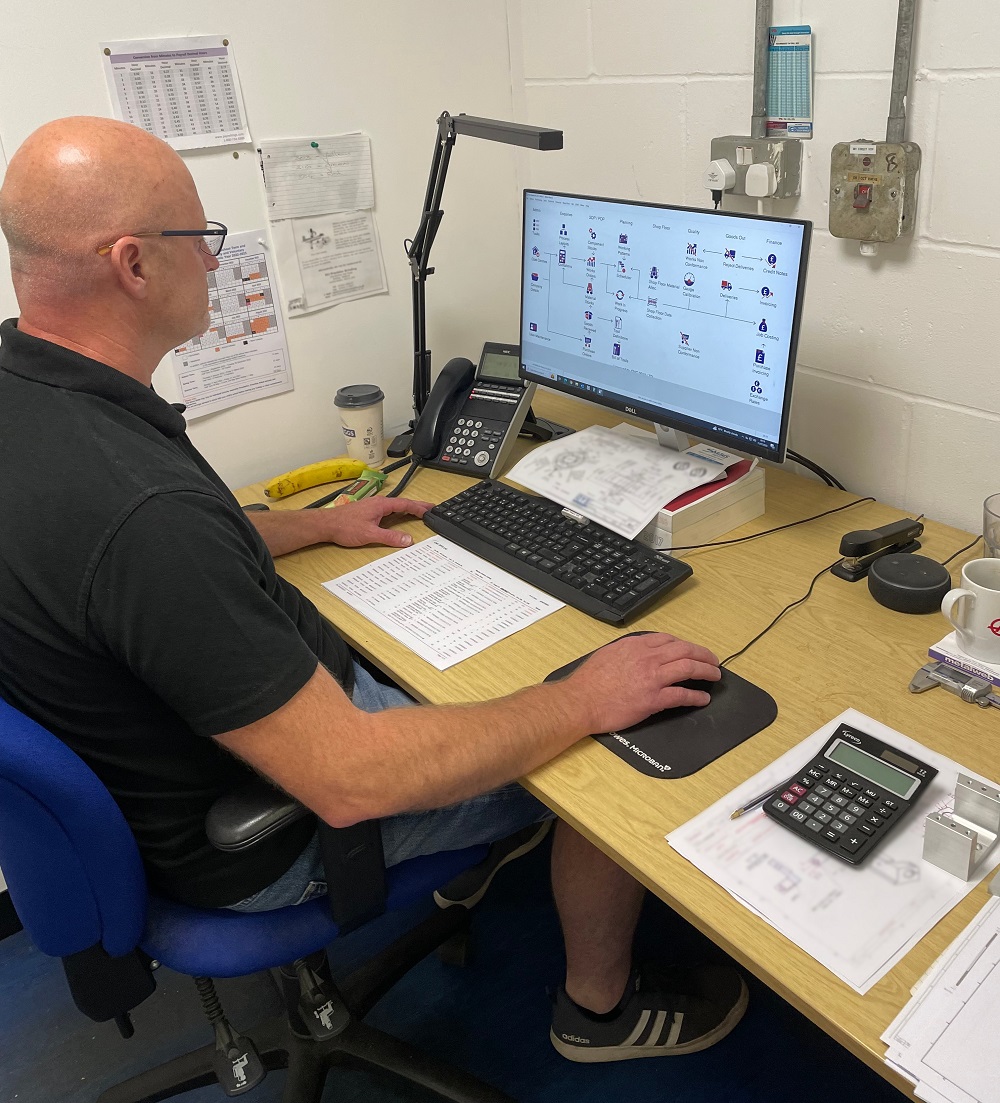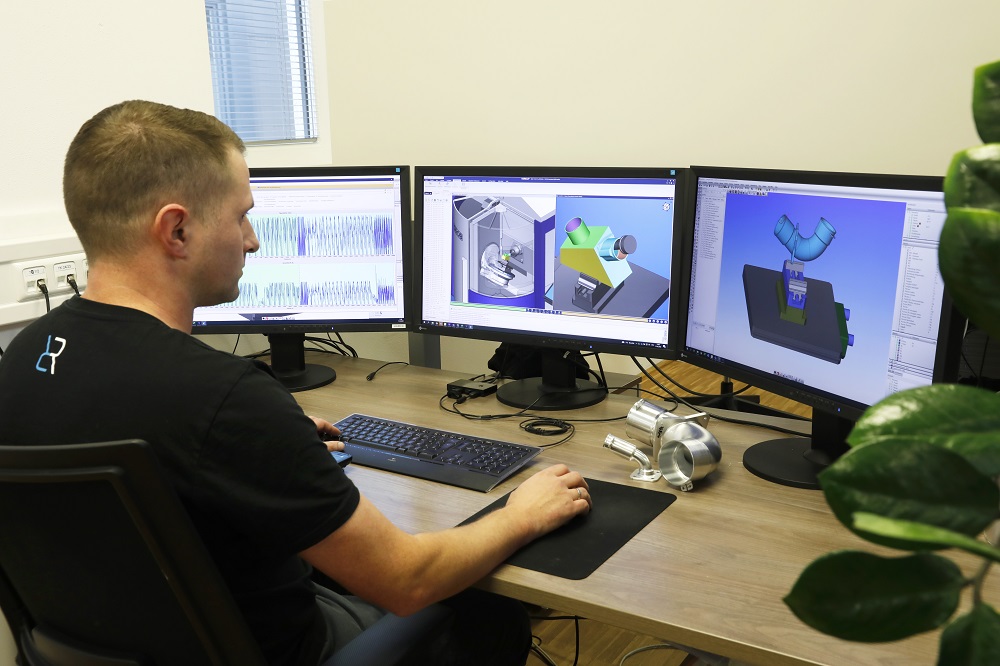Okuma is launching a new CNC system, the OSP-P500, on stand B36 in hall 15 at the EMO exhibition in Hanoverthis week (18-23 September). The smart machine control, which Okuma manufactures in-house, combines productive and precise machining with ease-of-use, energy efficiency and safety features to protect against cyberattacks.
Initially, five-axis machining centres in Okuma’s MU-V series and the Multus series of multi-tasking turn-milling machines will feature the new control. NCMT, the sales agent for Okuma in the UK and Ireland, advises that this latest CNC system has twice the computing power of conventional machine controls, shortening cycle times by up to 15%. It is particularly well suited to high-speed machining applications that demand top-quality surface finishes.
Notably, the control features an on-machine digital twin to facilitate the high-precision simulation of machining processes, reducing set-up times and speeding production. By performing these simulations on the machine itself, production can start immediately afterwards. Alternatively, with the digital twin on a PC, it is possible to perform simulation offline while production is in progress on the machine.
Even inexperienced users benefit from the advantages of the control due to its user-friendly interface. A ‘Smart OSP Operation’ function simplifies programming on the shop floor by providing automatic guidance through all the necessary steps. People without any prior experience can learn how to machine a component in one day, reports Okuma.
Featuring a comprehensive security system, the control protects machine processes, programs and data from cyberattacks. Advanced identification of users and encryption of communication according to the OPC-UA standard prevents unauthorised access.
Thanks to the integration of Eco Suite Plus, the OSP-P500 also reduces power consumption. Smart features record and analyse every operating status as well as CO₂ emissions.
For further information www.ncmt.co.uk



















